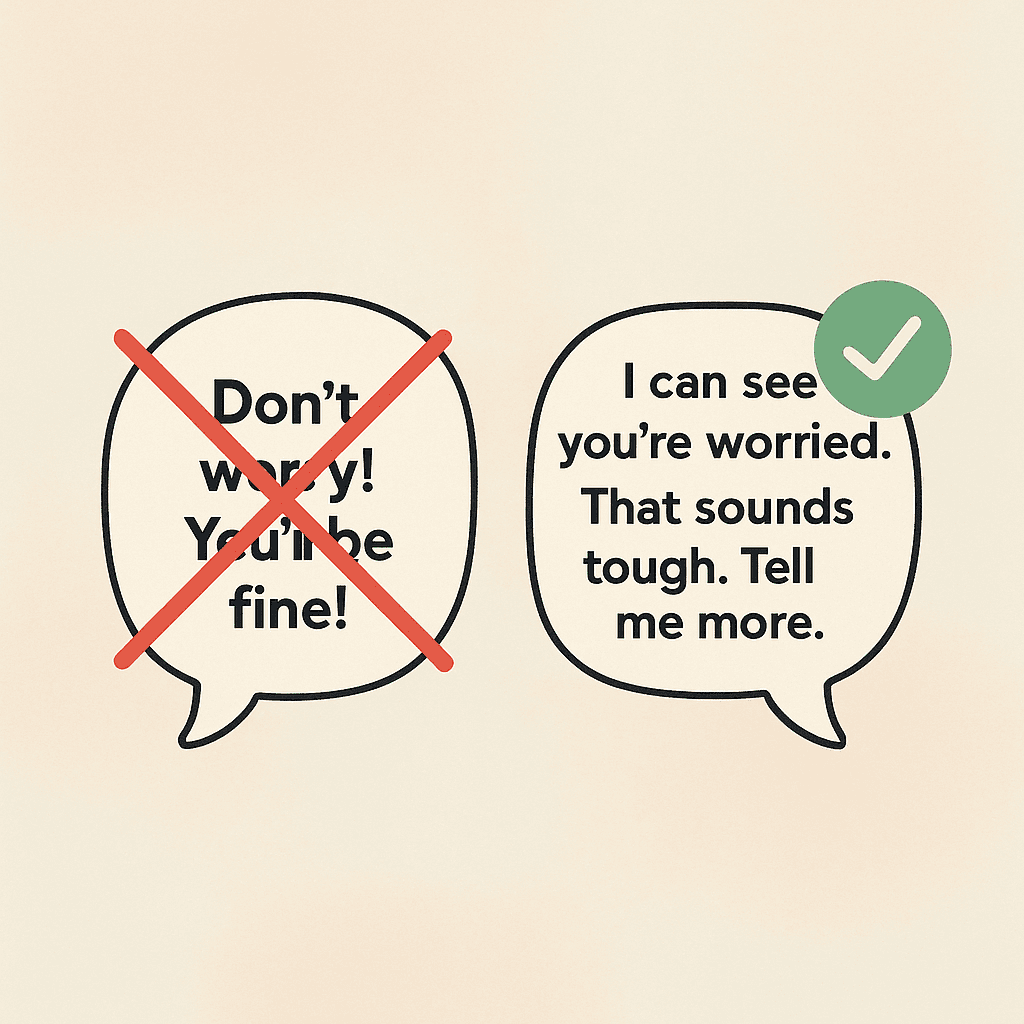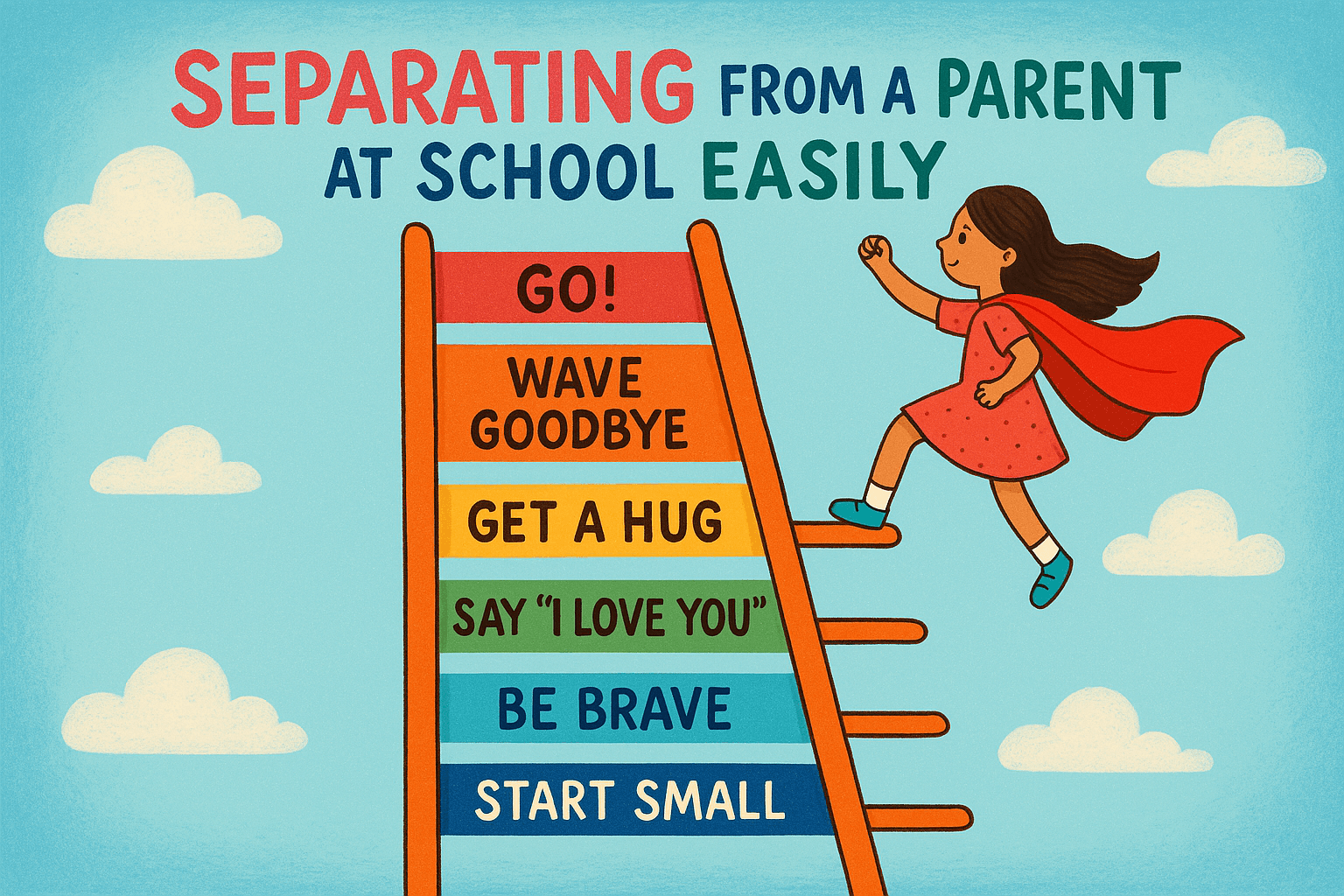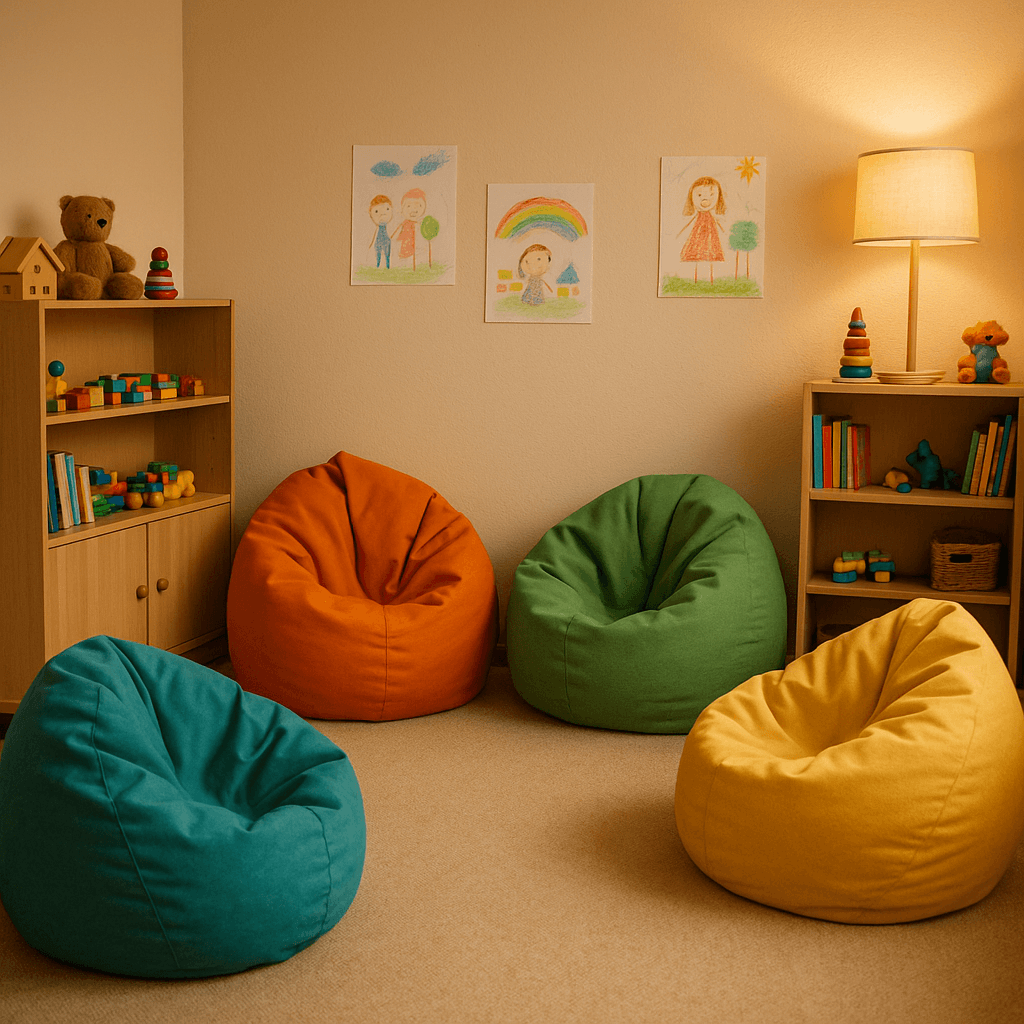How to Help Your Daughter with Anxiety: Your Simple Guide to Building Her Confidence
1 July 2025
If you've ever watched your daughter's shoulders tense at the mention of school tomorrow, or seen her bright smile fade when faced with something new, you know that gut-wrenching feeling. She whispers she's scared, or maybe she doesn't say anything at all – just clings a little tighter, breathes a little faster, asks "what if" a hundred times.
You want to fix it. To make the worry disappear. To see her tackle life with the confidence you know she has buried somewhere inside. But anxiety in girls aged 5-12 can feel like an invisible enemy – one that shows up at bedtime, before playdates, or in the middle of a perfectly normal Tuesday.
Here's what research shows: you're not alone, and more importantly, you can help your daughter with anxiety in ways that actually stick. The strategies that work aren't about eliminating worry completely (that's impossible and actually unhelpful). Instead, they're about giving her tools to feel brave even when butterflies fill her stomach.
What Childhood Anxiety Actually Means

When we talk about helping your anxious daughter, we're not talking about normal worries that come and go. Childhood anxiety is when worry becomes so big it gets in the way of daily life. It's the difference between being nervous about a test and refusing to go to school. Between feeling shy at a party and begging not to attend at all.
Anxiety looks different in every child, but for girls aged 5-12, it often shows up as:
Physical complaints (tummy aches, headaches) with no medical cause
Avoiding activities she used to enjoy
Constant need for reassurance ("Are you sure I'll be okay?")
Meltdowns over small changes or mistakes
Trouble falling asleep or frequent nightmares
As child psychologist Dr Tamar Chansky explains in her work on childhood anxiety, "Anxiety tricks children into thinking something terrible will happen. Our job as parents is to help them see through the trick without dismissing their very real feelings."
Think of anxiety like a smoke alarm that's too sensitive. Your daughter's alarm system works perfectly – it's just going off when there's burnt toast instead of an actual fire. The goal isn't to disable the alarm (we need it for real dangers!) but to help her recognise when it's a false alarm.
Why This Matters More Than You Think

Here's something that might surprise you: anxiety is the most common mental health challenge in children, affecting about 1 in 8 kids. For girls specifically, anxiety rates tend to increase as they approach the pre-teen years, making ages 5-12 a crucial window for building coping skills.
But here's the hopeful part: children who learn anxiety management skills early are far more likely to thrive as teenagers and adults. Research from the Child Mind Institute shows that when parents know how to respond to their daughter's anxiety, outcomes improve dramatically.
The most important takeaway: Your daughter's anxiety doesn't mean you've done anything wrong as a parent. It's not a sign she's fragile or that something's broken. Many highly sensitive, creative, and intelligent children experience anxiety. With the right support, these same qualities that make her prone to worry can become her greatest strengths – her empathy, her careful thinking, her awareness of others.
7 Practical Strategies to Help Your Daughter with Anxiety
1. Validate First, Problem-Solve Second
When your daughter says she's scared, your instinct might be to immediately reassure: "Don't worry, everything will be fine!" But validation needs to come before solutions.
Try this: Next time she expresses worry, reflect her feelings back first. "You're really worried about the swimming lesson tomorrow. That sounds really hard." Only after she feels heard should you move to problem-solving together.
Child therapist Lynn Lyons emphasises: "When we skip straight to reassurance, we accidentally send the message that the feeling itself is wrong. Validation says: your feelings make sense, AND we can handle them together."

2. Teach the "Worry Brain" vs "Wise Brain" Concept
Helping your daughter with anxiety becomes easier when she can recognise anxious thoughts for what they are – just thoughts, not facts.
Try this: Introduce the idea that we all have a "Worry Brain" that tries to keep us safe by imagining dangers, and a "Wise Brain" that knows what's really true. When she's anxious, ask: "What's your Worry Brain saying? Now what might your Wise Brain say?"
For a 7-year-old worried about a playdate:
Worry Brain: "What if nobody likes me and I have no one to play with?"
Wise Brain: "I've been to playdates before and found someone to play with. If I feel shy, I can look for one friendly face."
This isn't about positive thinking – it's about balanced thinking. Sometimes Worry Brain has a point (maybe she should prepare for the test!), but Wise Brain helps her see the whole picture.
3. Create a "Brave Behaviour" Ladder
Avoiding feared situations makes anxiety grow stronger. But throwing your daughter into her biggest fear isn't the answer either. A "Brave Behaviour" ladder breaks scary things into smaller steps.
Try this: Together, create a ladder with her fear at the top and tiny steps leading up. If she's anxious about sleeping alone:
Mum sits in room while she falls asleep
Mum sits just outside the door
Mum checks every 10 minutes
Mum checks once after 20 minutes
Sleeping alone with special stuffy
Sleeping alone confidently
Celebrate each step, even if it takes weeks. As Dr Dawn Huebner notes in her work on childhood anxiety: "Small steps forward are still steps forward. The goal is progress, not perfection."

4. Practice Calming Techniques When She's Not Anxious
The worst time to learn coping skills is during a panic moment. Just like fire drills, anxiety management works best when practised during calm times.
Try this: Make it fun and part of your routine:
"Bubble breathing": Breathe in slowly for 4, hold for 4, blow out like bubbles for 6
"5-4-3-2-1 grounding": Name 5 things you see, 4 you hear, 3 you can touch, 2 you smell, 1 you taste
"Tight and loose": Tense all muscles for 5 seconds, then release like a noodle
Set aside 5 minutes before bed to practice together. When anxiety strikes, she'll already know what to do because her body remembers from all that practice.
5. Be Her Confidence Coach, Not Her Rescuer
It's heartbreaking to watch your daughter struggle, but rescuing her from every anxious situation teaches her she can't handle hard things.
Try this: Instead of removing the challenge, coach her through it:
Wrong: "You don't have to go to the birthday party if you're scared."
Right: "The party feels scary. What's one thing that might help you feel braver? I know you can do hard things."
Support might look like:
Arriving at the party early so it's less overwhelming
Having a code word if she needs a break
Planning to stay for just the first hour
The message: "This is hard AND you can do it with support."
6. Model Calm Confidence (Even When You Don't Feel It)
Children are emotional detectives. Your daughter watches how you handle worry more than she listens to what you say about it.
Try this: Share your own worries appropriately and model coping:
"I'm feeling nervous about my presentation tomorrow. I'm going to take some deep breaths and practice one more time."
"My Worry Brain is being really loud today! Time for a walk to help my Wise Brain."
Research shows that anxious parents often have anxious children – not because of genetics alone, but because children learn by watching. The good news? When you model healthy coping, she learns that too.

7. Build Her Confidence Bank
Anxiety shrinks when confidence grows. Every time your daughter faces something scary and survives, she makes a deposit in her "confidence bank."
Try this: Keep a "Brave Book" together:
Write down every time she does something that felt scary
Include small wins: "Asked teacher for help," "Tried new food," "Slept with nightlight instead of full lights"
Review it when facing new challenges: "Look at all these brave things you've already done!"
Focus on effort over outcome: "You were so brave to try out for the team" matters more than whether she made it.
What Not to Do (Even Though It Might Feel Natural)
Avoiding these common mistakes can make a huge difference in helping your daughter with anxiety:
Don't minimise her feelings: "You're being silly" or "There's nothing to worry about" shuts down communication. Her fear feels real to her, even if it seems irrational to you.
Don't make accommodations that maintain anxiety: Letting her skip school whenever she's anxious, or calling her three times during a playdate for reassurance, actually feeds the anxiety monster.
Don't overwhelm with logic: Anxious brains don't respond well to lengthy logical explanations. Keep it simple and focus on feelings first.
Dr Reid Wilson, anxiety specialist, puts it perfectly: "The goal isn't to eliminate anxiety but to change your relationship with it. When parents understand this, everything shifts."
When to Seek More Help
While these strategies help many children, some daughters need additional support, and that's completely okay.
Consider reaching out to your GP or a child psychologist if:
Anxiety significantly interferes with school, friendships, or family life
Physical symptoms (stomach aches, headaches) happen most days
Your daughter seems sad or withdrawn alongside anxious
Sleep problems persist despite trying calming techniques
These strategies don't lead to any improvement after 4-6 weeks
Important note: If these strategies don't help after 4-6 weeks, or if your daughter's anxiety is significantly impacting daily life, consider speaking with your paediatrician or a child psychologist for personalised guidance.
Seeking help is a sign of strength, not failure. Many children benefit from a few sessions with a therapist who specialises in childhood anxiety, learning techniques tailored to their specific needs.

Quick Recap: Your Anxiety Action Plan
Let's pull together everything about how to help your daughter with anxiety:
Validate her feelings first – "That sounds really hard" before "You'll be fine"
Teach Worry Brain vs Wise Brain – Help her recognise anxious thoughts
Build brave behaviour ladders – Small steps toward facing fears
Practice calming techniques daily – Not just during anxious moments
Coach, don't rescue – Support her through challenges rather than removing them
Model calm coping – Show her how you handle your own worries
Celebrate brave attempts – Build her confidence bank with every try
Remember: Your daughter's sensitivity might make her prone to anxiety, but it also gives her incredible strengths – empathy, creativity, and deep thinking. With your support, she can learn to manage worry while keeping all the beautiful parts of who she is.
You're already doing the most important thing – seeking information to help her. That makes you exactly the parent she needs.
Tired of daily meltdowns and endless "what-ifs" from your anxious daughter? InnerSteps builds personalised stories that help your child recognise worry thoughts and build real confidence. Stories crafted specifically for her fears, delivered in a way that feels like play, not therapy. Start free at innersteps.org.
Disclaimer
This article is for informational purposes only and is not intended as medical or psychological advice. Every child is unique, and what works for one may not work for another. Always consult with qualified healthcare professionals for concerns about your child's mental health or development.
